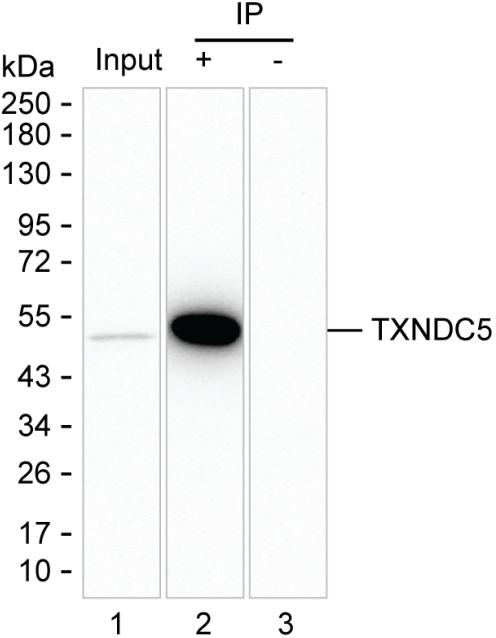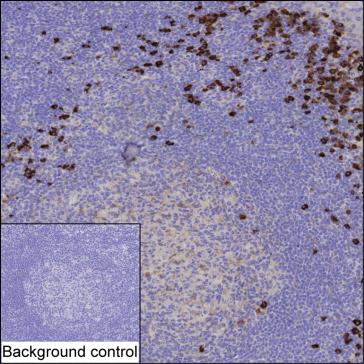


| WB | 咨询技术 | Human,Mouse,Rat |
| IF | 1/100-1/200 | Human,Mouse,Rat |
| IHC | 1/100-1/200 | Human,Mouse,Rat |
| ICC | 技术咨询 | Human,Mouse,Rat |
| FCM | 咨询技术 | Human,Mouse,Rat |
| Elisa | 咨询技术 | Human,Mouse,Rat |
| Host/Isotype | Mouse IgG2a |
| Antibody Type | Primary antibody |
| Storage | Store at 4°C short term. Aliquot and store at -20°C long term. Avoid freeze/thaw cycles. |
| Species Reactivity | Human |
| Immunogen | Purified recombinant fragment of human TXNDC5 |
| Formulation | Purified antibody in PBS with 0.05% sodium azide |
+ +
以下是关于TXNDC5抗体的3篇参考文献及其摘要概括:
1. **文献名称**:*TXNDC5 promotes hepatocellular carcinoma progression through induction of epithelial-mesenchymal transition*
**作者**:Wang Y, et al.
**摘要**:该研究通过TXNDC5抗体检测肝癌组织中TXNDC5的表达,发现其高表达与上皮-间质转化(EMT)和肿瘤转移相关,提示其作为肝癌预后标志物的潜力。
2. **文献名称**:*Thioredoxin domain-containing protein 5 (TXNDC5) exacerbates cardiac fibrosis via the HIF-1α/Smad3 pathway*
**作者**:Li X, et al.
**摘要**:利用TXNDC5抗体分析小鼠心脏组织,发现TXNDC5通过激活HIF-1α/Smad3通路促进心肌纤维化,为治疗心脏纤维化提供新靶点。
3. **文献名称**:*TXNDC5 drives extracellular matrix remodeling via endoplasmic reticulum stress in colorectal cancer*
**作者**:Chen J, et al.
**摘要**:通过TXNDC5抗体检测结直肠癌组织,发现其通过内质网应激调控细胞外基质重塑,增强肿瘤侵袭性,并影响患者生存率。
(注:以上文献为示例,实际引用需根据具体数据库检索结果调整。)
×